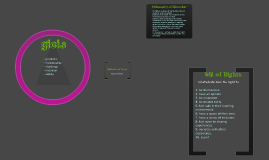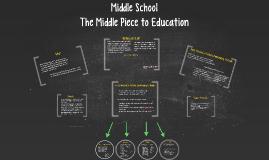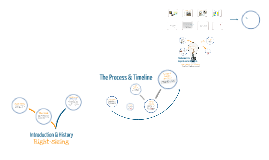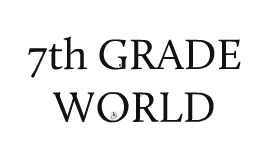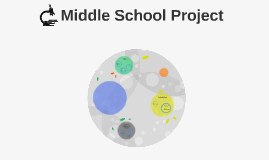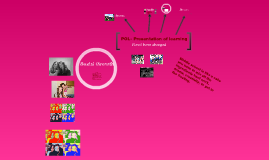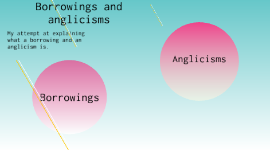middle school project
Transcript: My attempt at explaining what a borrowing and an anglicism is. Borrowings and anglicisms What is a 'borrowing'? Borrowings A word adopted from one language to another. It's caused by a cultural contact between two language communities. History English has had few major periods of adopting new words from other languages. It's and important part of cultural history for English speaking people. History I. Germanic period (time not specified) I. Borrowed from: Latin examples (old english - modern english) > butere - butter > mil - mile > straet - street > weall - wall > win - wine Borrowed from: 1. Latin examples: cest - chest circul - circle 2. Celtic examples: brocc - badger cumb - combe (valley) II. Old English Period (600 - 1100) II. Borrowed from: 1. Scandinavian languages examples: anger, cake, clumsy, gear, husband + place name suffixes 2. French examples: attorney, chapter, count, army, beef, art, adventure + prefixes and suffixes III. Middle English Period (1100 - 1500) III. Borrowed from: 1. Latin examples: abdomen, expensive, insane 2. Greek examples: anonymous, autograph, climax, ecstasy, history + suffixes 3. Arabic examples: algebra, alchemy, orange, sugar, coffee Early Modern English Period (1500 - 1650) IV. European languages: French (ballet, grenade, denim, shock), Spanish (alligator, armadillo), Italian (broccoli, motto, piano), Dutch/Flemish (smuggle, stripe, booze), German (noodle, kindergarten, poodle) other languages: Hindi (jungle, pajamas, shampoo), Persian (check, chess), Arabic (giraffe, caravan), Chinese (ketchup, tea), Japanese (geisha, karaoke, sushi), Australia (boomerang, kangaroo, and many more) Modern English (1650-present) V. Examples Examples Majority of the words used daily in English were originated in a different language. French German Yiddish Spanish Others 1. Ballet - form of dance, developed in France 2. Cafe - small, informal restaurant 3. Genre - category of something (books, movies, music) French 1. Fest - kind of party, festival, often a suffix 2. Kindergarten - type of school children go to before primary school 3. Rucksack - another name for backpack German 1.Glitch - small problem 2. Klutz - clumsy person Yiddish 1. Macho - very strong and masculine person, arrogant about their manhood 2. Patio - area outside the house not covered with a roof 3. Plaza - public open area, can be called "square" Spanish 1. Chinese - kung fu, tofu 2. Japanese - ninja, tsunami 3. Russian - babushka 4. Italian - paparazzi 5. Korean - taekwondo Others Anglicisation is a modification made to foreign words to make them easier to spell. Anglicisation Anglicisation Exonyms are names for places that are not the same as the local usage. Examples: 1. Russian Moskva - Moscow 2. Italian Firenze - Florence 3. Dutch Den Haag - The Hague 4. Spanish Sevilla - Seville Exonyms Exonyms Anglicisation of personal names used to be more common. Latin with Greek origin: Aristotle - Aristoteles ; Hadrian - Hadrianus Pope names: Pope John Paul II - Ioannes Paulus II ; Pope Benedict XVI - Benedictus XVI Personal names Personal names During times of immigration names of the immigrants were changed. French: Pariseau - Parizo; Boucher - Bushey; Mailloux - Mayhew Irish: Ó Briain - O'Brien Scottish: Somhairle - Sorley Welsh: ap Hywell - Powell German: Bürger - Burger; Schneider - Snyder Immigrant names Immigrant names = words borrowed and modified. 1. changed endings: obscenus (Latin)- obscene (English) 2. changed plura forms: index - indexes (English) instead of indices (Latin) Loanwords Loanwords What is an 'Anglicism'? Anglicisms Anglicism is a word borrowed from English into other language with the rise in Anglophone media and global spread of British and American cultures in 20th and 21st centuries. Examples: 1. komputer (pl) - computer (eng) 2. stres - stress 3. serwer - server 4.skaner - scanner 5. biznes - business 6. menedżer - manager 7. dżins - jeans 8. klips - clips Polish Polish 1. literal translations: leżeć na słońcu - 'lie on the sun' (equivalent: lie in the sun) 2. false friends ewentualnie (possibly) and eventually aktualny (current) and actually Ponglish Ponglish Anglicisms are divided into those used in European French and Quebec French. ex. sweat - European French frencher - Quebec French > different Anglicisms for historical reasons > attempts to eradicate Anglicisms, ex. 1993 legislation forbidding the usage of anglicisms in publications Examples: 1. changing meaning: fashion victim - English: smn who can't dress, negative; French: smn who can dress, positive le brushing - from 'to brush', in French means 'to blowdry' le living - from 'to live', in French short for 'living room' 2. Scotch tape (eng) - le scotch (fr) French French More common than Anglicisms in Korean is Konglish - 'Korean-style English'. Contains loanwods not fully understandable to native English speakers. Examples: 1. di-ca : digital camera 2. sel-ca: selfie 3. eye shopping: window shopping 4. overeat: vomit phrases taken






